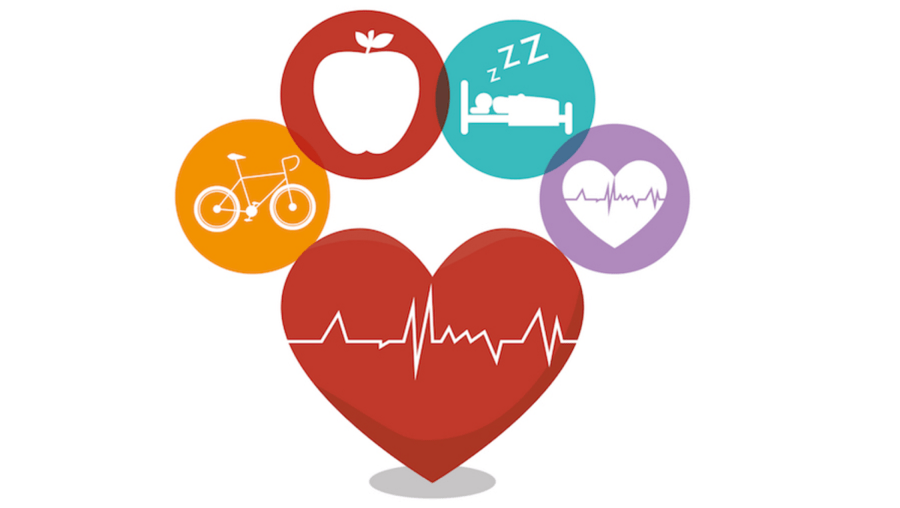Unlock Your Brain's Potential: 15 Proven Methods to Enhance Cognitive Function and Boost Brain Health Today!
Updated at: 2025-06-06 17:29:07 (4 months ago by Melkisedeck Leon Shine)
15 Strategies for Enhancing Cognitive Function and Brain Health
In contemporary society, maintaining optimal cognitive function is paramount for overall well-being and productivity. Cognitive function, encompassing memory, attention, executive function, and processing speed, is significantly impacted by lifestyle choices and environmental factors. This article explores fifteen evidence-based strategies, grounded in neuroscience and psychological principles, to promote robust brain health and enhance cognitive performance. Key concepts discussed include neuroplasticity (the brain's ability to reorganize itself by forming new neural connections throughout life), cognitive reserve (the brain's resilience to age-related cognitive decline), and the impact of lifestyle factors on brain structure and function.
1. Physical Exercise and Cerebrovascular Health: Regular physical activity is crucial for cognitive health. Exercise enhances cerebral blood flow, delivering essential oxygen and nutrients to the brain, thereby supporting neuronal growth and synaptic plasticity. This aligns with the principles of the "brain reserve" hypothesis, suggesting that a physically active lifestyle builds a more robust brain capable of withstanding age-related decline. For example, aerobic exercise, such as running or swimming, has been demonstrably linked to improved memory and executive function in numerous studies.
2. Sleep Hygiene and Memory Consolidation: Adequate sleep is paramount for cognitive restoration and memory consolidation. During sleep, the brain processes and integrates newly acquired information, transferring it from short-term to long-term memory. Sleep deprivation, conversely, impairs cognitive function, affecting attention, concentration, and decision-making. Implementing consistent sleep schedules and creating a conducive sleep environment are critical for optimizing sleep quality and cognitive performance. The two-process model of sleep regulation explains the interplay between homeostatic sleep pressure and circadian rhythms in determining sleep timing and duration.
3. Nutritional Neuroscience and Cognitive Enhancement: A balanced diet rich in fruits, vegetables, whole grains, and lean proteins provides essential micronutrients vital for brain health. Omega-3 fatty acids, for instance, are crucial components of neuronal membranes and play a significant role in neurotransmission and neuroprotection. The Mediterranean diet, characterized by its emphasis on plant-based foods, healthy fats, and moderate consumption of fish, has been associated with reduced risk of age-related cognitive decline.
4. Hydration and Cognitive Performance: Even mild dehydration can negatively impact cognitive function, leading to decreased attention, impaired memory, and reduced cognitive processing speed. Maintaining adequate hydration is essential for optimal brain function, ensuring efficient neurotransmission and cognitive performance. The human brain is approximately 73% water, highlighting its vital role in brain structure and function.
5. Cognitive Stimulation and Neuroplasticity: Engaging in cognitively stimulating activities, such as puzzles, reading, or learning new skills, promotes neuroplasticity – the brain's ability to reorganize itself by forming new neural connections. These activities challenge the brain, enhancing cognitive reserve and mitigating the risk of age-related cognitive decline. This is in line with the "use it or lose it" principle of brain function.
6. Social Engagement and Cognitive Reserve: Maintaining strong social connections and actively participating in social activities enhances cognitive function and promotes overall well-being. Social interaction stimulates cognitive processes and fosters a sense of belonging and purpose, contributing to cognitive reserve and resilience. Studies indicate that individuals with robust social networks tend to exhibit better cognitive outcomes in later life.
7. Stress Management and Neuroprotection: Chronic stress can have detrimental effects on brain structure and function, impairing cognitive performance and increasing vulnerability to neurological disorders. Effective stress management techniques, such as mindfulness, meditation, or yoga, can help mitigate the negative impacts of stress on the brain. These practices help regulate the hypothalamic-pituitary-adrenal (HPA) axis, reducing the production of stress hormones.
8. Alcohol Moderation and Neurotoxicity: Excessive alcohol consumption can have neurotoxic effects, leading to impaired cognitive function and an increased risk of neurological disorders. Moderate alcohol consumption, if any, is recommended to minimize potential negative impacts on brain health. The long-term effects of excessive alcohol use can lead to structural brain damage, impacting cognitive abilities permanently.
9. Smoking Cessation and Vascular Health: Smoking significantly impairs cerebrovascular health, reducing blood flow to the brain and increasing the risk of cognitive decline. Quitting smoking is crucial for maintaining optimal brain health and reducing the risk of age-related cognitive impairment. Nicotine's vasoconstricting effects directly impact the brain's oxygen supply.
10. Sensory Stimulation and Cognitive Enhancement: Engaging in activities that stimulate multiple senses enhances cognitive function and promotes neuroplasticity. Novel experiences, such as trying new foods or exploring unfamiliar environments, challenge the brain and contribute to cognitive reserve. This stimulation fosters the creation of new neural pathways and enhances cognitive flexibility.
11. Lifelong Learning and Cognitive Fitness: Continuously engaging in intellectually stimulating activities throughout life contributes significantly to maintaining cognitive fitness. This includes reading, learning new skills, and pursuing intellectual hobbies. This aligns with the concept of cognitive reserve, where a higher level of mental stimulation protects against cognitive decline.
12. Positive Psychology and Cognitive Well-being: A positive outlook and optimistic mindset have been linked to improved cognitive function and resilience. Cultivating positive emotions and practicing gratitude can enhance brain health and contribute to overall well-being. Positive psychology principles highlight the importance of focusing on strengths and promoting positive emotions.
13. Novelty Seeking and Cognitive Plasticity: Exposure to novel experiences, environments, and learning opportunities stimulates neuroplasticity and enhances cognitive function. New challenges force the brain to adapt and create new neural pathways, promoting cognitive flexibility and resilience. This principle aligns with the concept of "cognitive enrichment".
14. Vitamin D and Brain Health: Adequate levels of Vitamin D are essential for various bodily functions, including brain health. Vitamin D deficiency has been linked to cognitive impairment. Ensuring adequate Vitamin D levels through sunlight exposure or supplementation can support optimal cognitive function. Vitamin D receptors are found throughout the brain, highlighting its importance in neurological function.
15. Cultivating Curiosity and Lifelong Learning: Maintaining a curious mindset and a thirst for knowledge is a crucial aspect of lifelong cognitive health. Continuous learning and exploration stimulate the brain, promoting adaptability and enhancing cognitive function throughout life. Curiosity drives exploration, leading to the acquisition of new knowledge and skills.
Conclusions and Recommendations
In conclusion, enhancing cognitive function and brain health is a multifaceted endeavor that requires a holistic approach encompassing lifestyle choices, environmental factors, and proactive engagement in cognitive stimulation. The fifteen strategies outlined above, grounded in neuroscience and psychological principles, provide a comprehensive framework for improving cognitive performance and safeguarding against age-related cognitive decline. Recommendations include prioritizing regular physical exercise, ensuring adequate sleep hygiene, adopting a balanced diet rich in micronutrients, managing stress effectively, limiting alcohol consumption, quitting smoking, and actively engaging in cognitively stimulating activities. Furthermore, fostering strong social connections, seeking novelty, maintaining a positive attitude, and ensuring sufficient Vitamin D intake are equally important. The impact of implementing these strategies is multifaceted, ranging from improved memory and attention to enhanced decision-making abilities and a greater sense of well-being. Further research is warranted to explore the synergistic effects of combining these strategies and to investigate the optimal approaches for different age groups and populations. The long-term applicability of these strategies extends across the lifespan, promoting cognitive health and resilience throughout life. A longitudinal study exploring the combined impact of these lifestyle factors on cognitive trajectories over several decades would significantly advance our understanding of brain health and aging.
Reader Pool: Considering the multifaceted nature of cognitive health, what are the most impactful strategies outlined in this article, and how could their implementation be further optimized across various socio-economic and cultural contexts?





